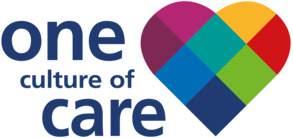Making information easy to understand, and using plain language matters. If we communicate with our patients and each other using simple words, and short sentences, it can make a difference to quality and safety. It can also help our patients better understand the guidance we give them, and plays a big part in reducing health inequalities.
You might have heard the term 'health literacy' which is how much people have the ability to find, understand and use information and services to make decisions about their health and wellbeing.
The average reading age of adults in the UK in 9 to 11 years old which means people can:
- Understand the words on a more complicated poster and simply worded leaflets
- Understand a short, formal letter, note or form.
- Call 111
- Describe types and levels of pain in more detail.
- Understand what they’ve been prescribed by a clinician.
The information we write often has a higher reading age than this. There is evidence to show that adults who have low health literacy, and their children and families, have worse health outcomes. And for colleagues with low health literacy it can affect morale, quality and safety.
Below are some resources to help you think about how you can make your communication easier for people to understand:
- A short PowerPoint presentation which can be shared in teams and services to help start the conversation (see attached)
- Health Literacy webinar and presentation: Health Literacy - Health Innovation NENC
- Short guide from the Calderdale Cares Partnership - Health Literacy CIEEC feedback FINAL
- NHS medical document readability tool - NHS Document Readability Tool
- NHS Health Literacy toolkit - Health-Literacy-Toolkit.pdf
Further information and all the above resources are on the Communication Team pages of the intranet: Branding, logos, templates and writing style - CHFT Intranet

